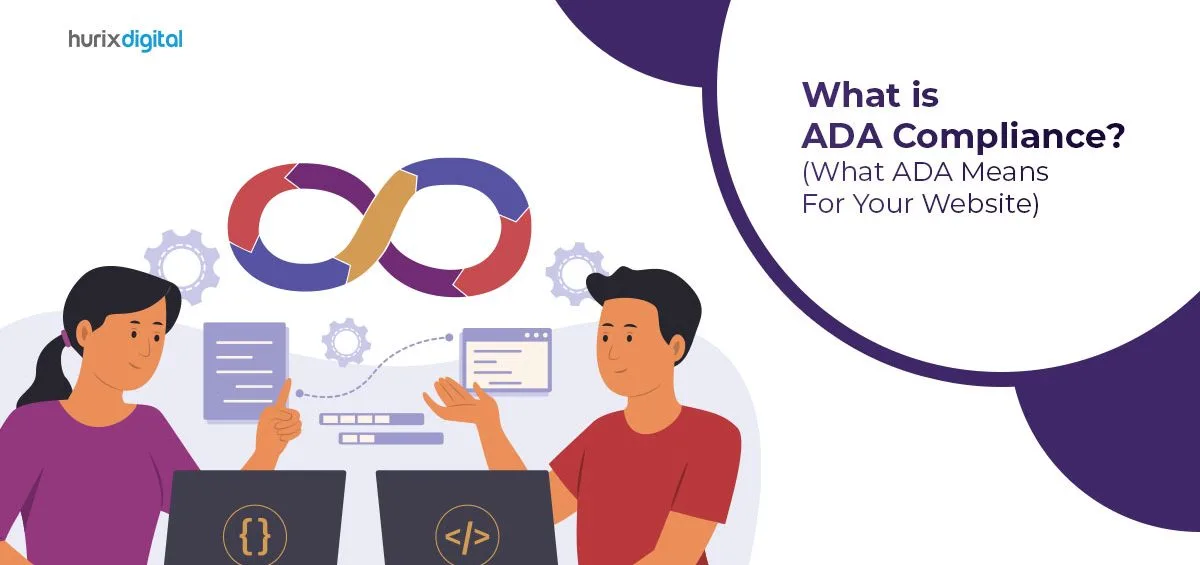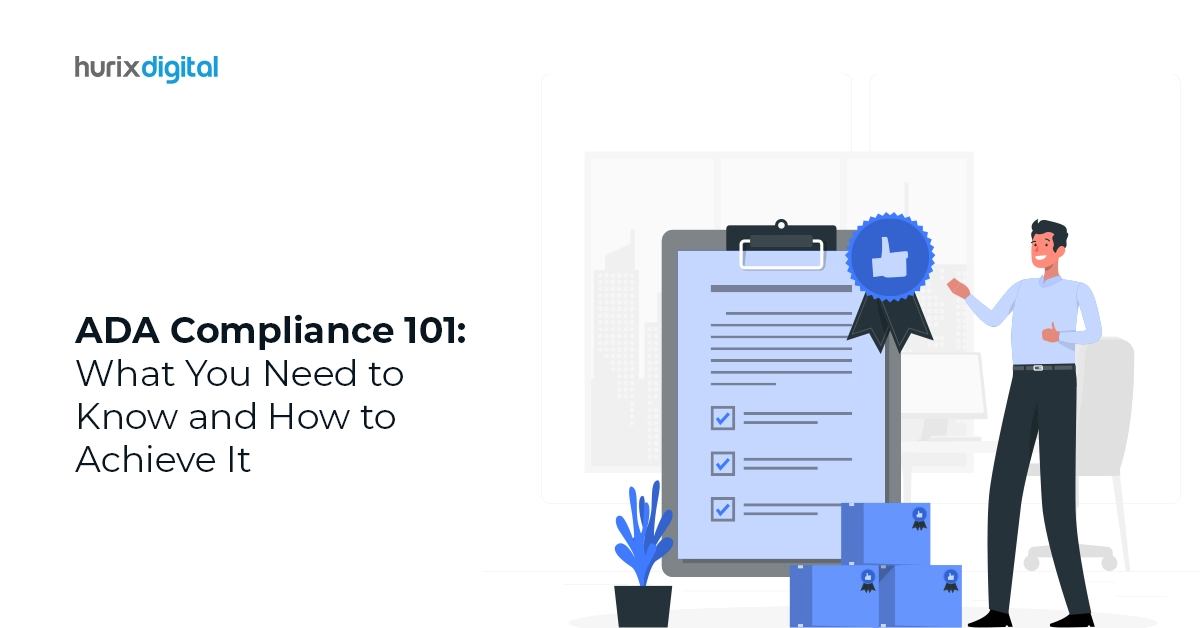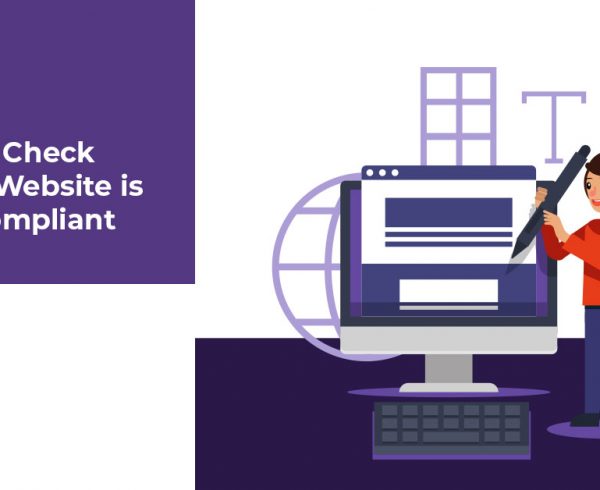Summary
The blog post explains what ADA compliance is and its implications for websites. It discusses the importance of making digital content accessible to individuals with disabilities, the legal requirements surrounding ADA compliance, and the benefits of implementing accessibility measures.
The Americans with Disabilities Act (ADA) protects people with disabilities against discrimination and promotes accessibility to public services. ADA compliance encourages equal participation for people with disabilities in all aspects of society.
Table of Contents:
1. What is ADA Compliance?
2. Understanding Web Content Accessibility Guidelines (WCAG)
3. Why Does Your Website Need to Be ADA-Compliant?
4. The Importance of ADA Compliance for Your Website
5. What Are the Steps to Achieve ADA Compliance for Your Website?
6. Important Accessibility Features of an ADA-Compliant Website
“Why should I bother with ADA compliance for websites?” The answer is simple – it’s not only the right thing to do, but it also benefits both users and businesses. For users with disabilities, an ADA-compliant website ensures they can enjoy a seamless online experience just like everyone else. And for companies, it means tapping into a broader audience, improving SEO, and avoiding potential legal issues.
So, consider ADA compliance next time you’re working on your website.
What is ADA Compliance?
ADA compliance ensures that websites and digital services are accessible to people with disabilities. Your website should cater to users with diverse needs, such as visual, auditory, or cognitive impairments.
In a nutshell, ADA web compliance is about making the Internet a more inclusive space for all. It can be compared to adding ramps and elevators to buildings for wheelchair users but in the digital world.
Understanding Web Content Accessibility Guidelines (WCAG)
WCAG is a set of recommendations designed to make web content more accessible for people with disabilities. The guidelines cover various aspects, like text, images, and multimedia, ensuring everyone can enjoy a smooth online experience. You can access a complete guide here.
Why Does Your Website Need to Be ADA-Compliant?
Let’s look at some numbers:
- Only 2% of the top one million websites worldwide are accessible.
- 5.7% of adults in the U.S. have serious hearing impairments, while 4.9% have serious vision impairments or blindness.
- By 2050 nearly 2.5 billion people are predicted to have some degree of hearing loss.
- 60% of screen readers feel that web accessibility is on the downturn.
The Importance of ADA Compliance for Your Website
There are multiple ways in which ADA can help your website. Let’s have a look.
1. Accessibility for all:
Understanding what is ADA compliance enables you to create websites that prioritize accessibility. By considering the needs of users with disabilities, you ensure that your website offers a seamless and inclusive experience, allowing everyone to access your content and services without barriers.
2. Wider audience reach:
Embracing ADA compliance helps you cater to a more diverse user base. By making your website accessible, you can reach millions of people with different abilities, increasing the potential for more engagement, conversions, and customer loyalty.
3. Better SEO:
An accessible website can enjoy improved search rankings. Following web accessibility compliance guidelines will make it easier for search engines to understand and index your content. This can result in higher visibility, driving more traffic and ultimately increasing the potential for new customers and business growth.
4. Legal protection:
Complying with ADA guidelines helps you avoid legal issues like those faced by Domino’s Pizza, which encountered a lawsuit over website inaccessibility.
A report found 815,600 WCAG compliance issues among Fortune 100 companies. By being proactive about accessibility, you reduce the risk of legal complications and demonstrate a commitment to inclusivity, saving you time and money in the long run.
5. Positive brand image:
Companies like Microsoft are well-known for promoting accessibility in their products, which bolsters their reputation as socially responsible businesses.
By incorporating ADA compliance for websites, you show your audience that you care about inclusivity and equal access, creating a positive brand image that can attract more customers and set you apart from competitors. Positive brand image = business growth.
What Are the Steps to Achieve ADA Compliance for Your Website?
How to make your website ADA-compliant and for all?
1. Evaluate your website
Start by understanding ADA compliance and assess your website’s accessibility level. Then, use automated tools to identify areas that need improvement, including:
- WAVE
- aXe
- Siteimprove
- Tenon.io
- DynoMapper
2. Learn from the pros
Study examples of accessible websites like Amazon, Apple, and Microsoft. Observe their accessibility features and how they enhance the user experience for people with disabilities.
3. Implement changes
Work with developers or use website builders with built-in accessibility features to make the necessary updates. This might involve adding alt text to images, ensuring proper contrast, or improving keyboard navigation.
4. Stay updated with guidelines
Continuously familiarize yourself with the WCAG to stay informed about the best practices in ADA compliance for websites.
5. Test and gather feedback
Encourage users with disabilities to test your website and provide feedback on their experience. This will help you identify areas that still need improvement.
6. Maintain accessibility
Regularly review and update your website to ensure ongoing compliance. Keep an eye on new technologies and trends that enhance accessibility for all users.
Important Accessibility Features of an ADA-Compliant Website
- Understandable Text: Make sure your content is easy to read with clear fonts and simple language.
- Alt Text for Images: Provide descriptive alternative text for images so that screen readers can convey the information to visually impaired users.
- Keyboard Navigation: Allow users to navigate your website using just their keyboard, ensuring an accessible experience for those unable to use a mouse.
- Video Captions & Transcripts: Include captions and transcripts for video and audio content, catering to users with hearing impairments.
- ARIA Labels: Use Accessible Rich Internet Applications (ARIA) labels to improve accessibility for screen reader users by providing context and interactivity.
- Contrasting Colors: Choose colors with high contrast, which makes reading and interacting with your site more accessible for users with vision impairments.
- Consistent Navigation: Design your website with consistent and intuitive navigation, helping users find their way around easily.
Also read, How to Check if Your Website is ADA Compliant
In Conclusion
ADA compliance is crucial in fostering an inclusive online experience for everyone, including users with disabilities.
By prioritizing accessibility and pursuing ADA compliance, businesses can tap into a wider audience and contribute to a more equitable and user-friendly digital landscape.
Chat with us at Hurix Digital for expert guidance on ADA compliance and unlock the potential of an inclusive online experience.
Transform your website today and embrace accessibility for a more equitable and user-friendly digital world. Get started now!











